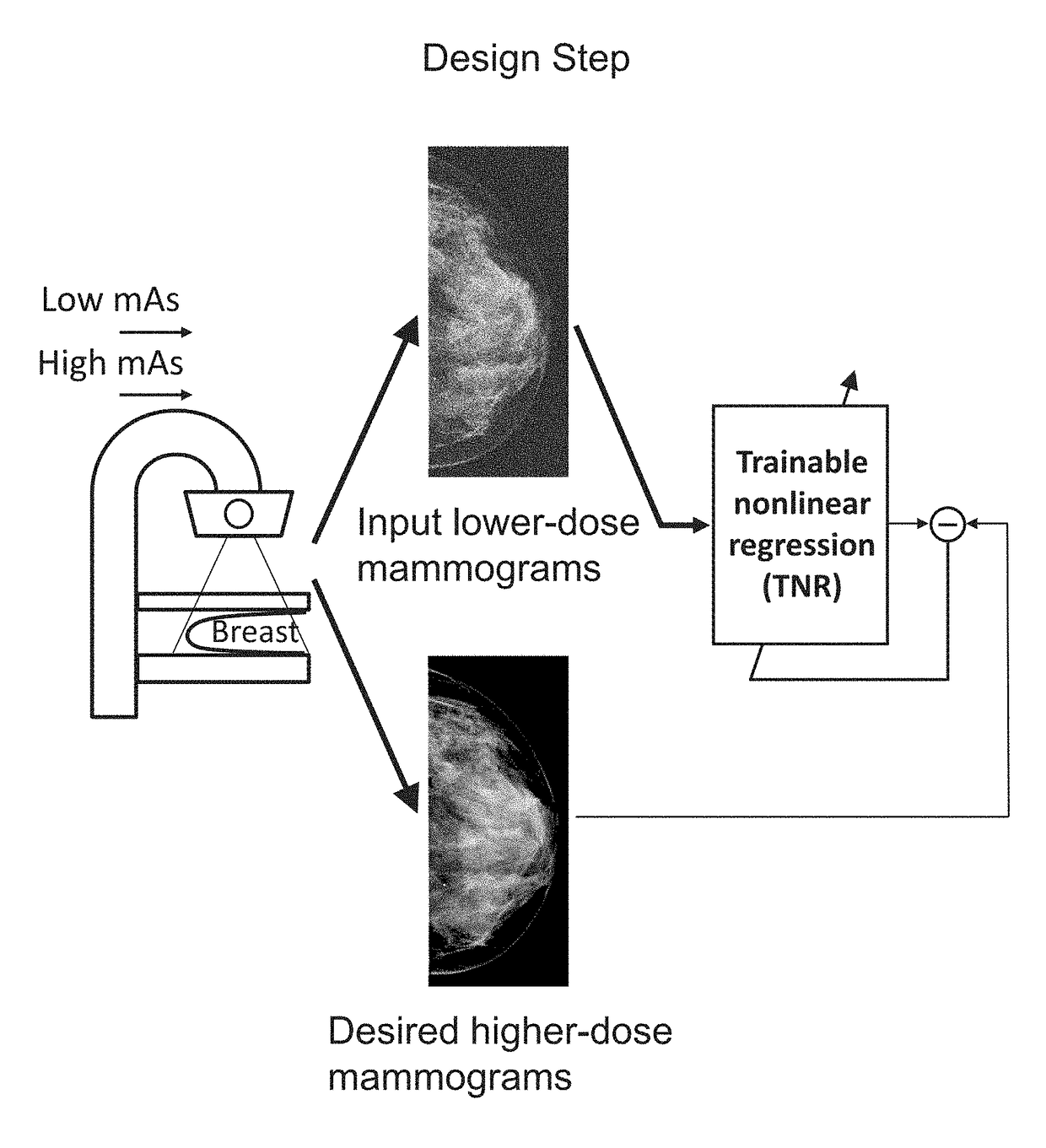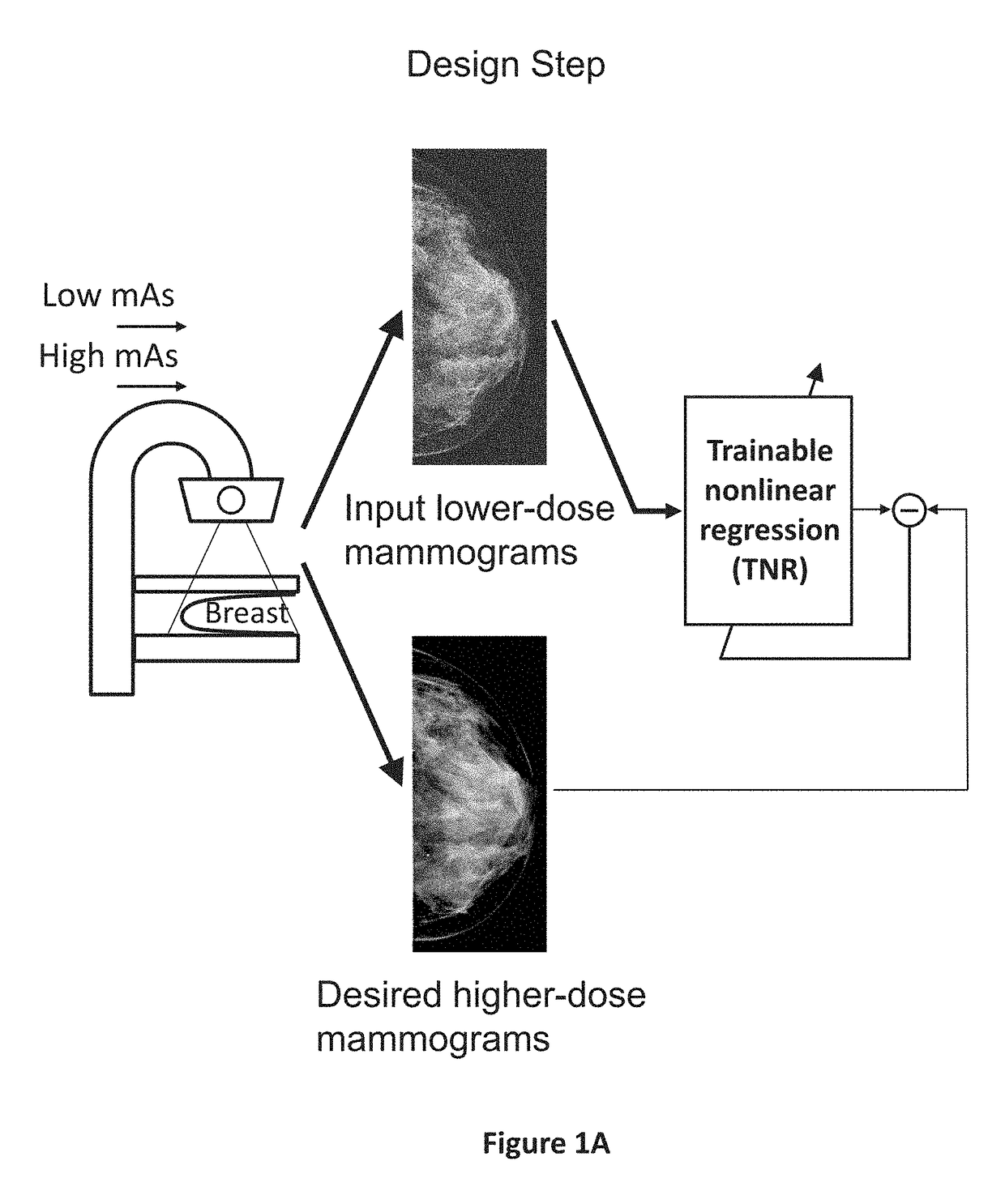Converting low-dose to higher dose mammographic images through machine-learning processes
a machine learning and high-dose technology, applied in the field of mammography, can solve the problems of high signal-to-noise ratio, insufficient risk of radiation exposure for asymptomatic women under 35, and inability to detect breast cancer, so as to improve the detection ability of lesions and clinically important findings such as masses and microcalcifications, and reduce noise and artifacts due to low radiation dose.
- Summary
- Abstract
- Description
- Claims
- Application Information
AI Technical Summary
Benefits of technology
Problems solved by technology
Method used
Image
Examples
Embodiment Construction
[0073]In preferred examples, pixel-based trainable nonlinear regression (PTNR) converts lower-dose mammograms to higher-quality, higher-dose-like mammograms. Lower-dose mammograms are of lower image quality with much noise. Higher-dose-like mammograms look like real, high-dose mammograms that are of higher image quality with less noise or artifacts. The PTNR uses a trainable nonlinear regression (TNR) model that processes pixels in mammograms. There are two main steps associated with PTNR: (1) a design step to determine the parameters in PTNR by using designing images and (2) a conversion step to convert low-dose mammograms to higher-dose-like mammograms or “virtual high-dose” mammograms where noise and artifacts are eliminated or at least substantially reduced. FIG. 1A shows a schematic diagram of a PTNR in a design step. In the design step, the PTNR is designed with input lower-dose mammograms with much noise and the corresponding desired higher-dose mammograms with less noise or ...
PUM
 Login to View More
Login to View More Abstract
Description
Claims
Application Information
 Login to View More
Login to View More - R&D
- Intellectual Property
- Life Sciences
- Materials
- Tech Scout
- Unparalleled Data Quality
- Higher Quality Content
- 60% Fewer Hallucinations
Browse by: Latest US Patents, China's latest patents, Technical Efficacy Thesaurus, Application Domain, Technology Topic, Popular Technical Reports.
© 2025 PatSnap. All rights reserved.Legal|Privacy policy|Modern Slavery Act Transparency Statement|Sitemap|About US| Contact US: help@patsnap.com



